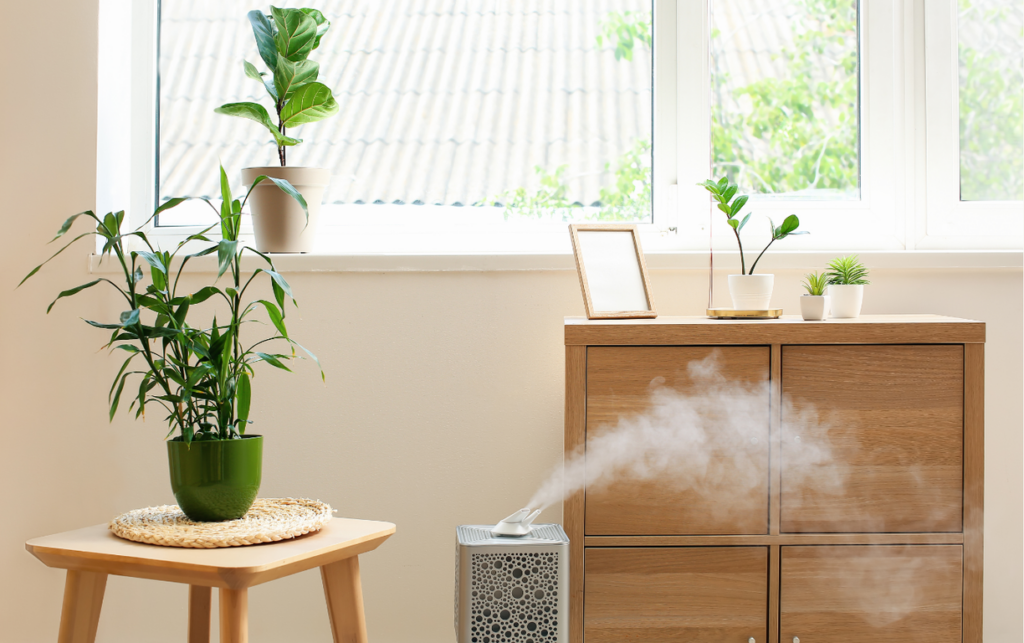Physical Address
304 North Cardinal St.
Dorchester Center, MA 02124
Physical Address
304 North Cardinal St.
Dorchester Center, MA 02124

When I first started using a humidifier, I was amazed at how much it transformed my living space. Dry air can wreak havoc on our health and comfort, especially during the colder months. By adding moisture back into the air, a humidifier can make a world of difference in how we breathe, sleep, and even feel day-to-day.
As I explored the benefits of using a humidifier, I discovered that it not only
When I first started using a humidifier, I was amazed at how much it transformed my living space. Dry air can wreak havoc on our health and comfort, especially during the colder months. By adding moisture back into the air, a humidifier can make a world of difference in how we breathe, sleep, and even feel day-to-day.
As I explored the benefits of using a humidifier, I discovered that it not only alleviates dry skin and irritated sinuses but also helps maintain the integrity of my home. It’s fascinating how something so simple can enhance air quality and contribute to a healthier environment. Let’s dive into what really happens when you introduce a humidifier into your home and why it might just be the solution you’ve been looking for.

Using a humidifier provides various advantages that enhance comfort and well-being. From improving air quality to supporting respiratory health, the benefits make a significant impact.
Improved air quality stands as one of the key benefits of using a humidifier. Humidifiers increase moisture levels in the air, which helps reduce allergens such as dust mites and mold. They also diminish the presence of static electricity, creating a more pleasant living environment. With better humidity control, wooden furniture and floors maintain their integrity, as balanced moisture levels prevent cracking and warping.
Respiratory health enhancements contribute to overall wellness when using a humidifier. Moist air alleviates symptoms associated with congestion, asthma, and allergies. Humidifiers help keep mucus membranes moist, easing breathing difficulties during colds or flu. Additionally, they can improve sleep quality by reducing snoring caused by dry air irritation. Maintaining optimal humidity levels promotes a healthier atmosphere, benefiting everyone in the household.
Using a humidifier can lead to some unintended side effects if not managed properly. Awareness of these issues is crucial for maintaining a healthy and comfortable environment.
Over-humidification can create problems like excessive moisture, resulting in condensation on surfaces. This excess moisture may lead to water damage, including peeling paint and warped wooden furniture. Maintaining indoor humidity between 30% and 50% prevents these issues. I recommend using a hygrometer to monitor humidity levels regularly. If humidity rises too high, reduce the humidifier output or open windows for ventilation.
Increased humidity can foster an environment for mold and dust mites. Mold spores thrive in damp conditions, potentially causing respiratory issues and allergic reactions. Regular cleaning of the humidifier is essential to prevent mold buildup, and I suggest changing the water daily. Additionally, keeping the living space clean and dry helps minimize allergens. Identifying potential sources of excess moisture, like leaks, helps ensure a healthier indoor environment.
Different types of humidifiers serve unique purposes, making it essential to choose the right one for my needs. Here’s a look at a couple of the most common types.
Evaporative humidifiers consist of a fan that blows air through a wet wick or filter. The evaporation process naturally adds moisture to the air without over-humidifying the environment. They self-regulate; as humidity increases, the evaporation rate slows down. This type of humidifier requires regular maintenance and cleaning to prevent mold and bacteria buildup. It’s ideal for those looking for a cost-effective option that doesn’t require frequent refilling.
Ultrasonic humidifiers use high-frequency vibrations to create a fine mist of water droplets. They’re known for their quiet operation and energy efficiency. Available in cool or warm mist options, they can add moisture without raising indoor temperatures significantly. With fewer moving parts, ultrasonic humidifiers typically require less maintenance; however, they do need regular cleaning to prevent mineral buildup, especially when using hard water. This type suits those who prefer a silent, sleek design and easy portability.
Using a humidifier can significantly enhance indoor air quality, but following best practices is essential for maximum benefits and safety.
Regular maintenance and cleaning of a humidifier ensure optimal performance and longevity. I clean my humidifier every three days, depending on usage. This routine helps prevent bacteria and mold from developing in the water tank and internal components. I empty the tank, rinse it with clean water, and scrub it with a mixture of vinegar and water to eliminate any buildup. If your humidifier has filters, check them regularly and replace them according to the manufacturer’s recommendations for effective operation.
Maintaining optimal humidity levels between 30% and 50% proves essential for comfort and health. I use a hygrometer to monitor humidity, adjusting the humidifier’s output as needed. When humidity levels exceed 50%, risks of mold growth and dust mites increase, so I ventilate the space or reduce the humidifier’s settings. Striking the right balance ensures a pleasant living environment while minimizing health risks.

Using a humidifier has truly changed my living space for the better. The benefits I’ve experienced are hard to ignore. Improved air quality and relief from dry skin and congestion have made my home a more comfortable place.
It’s essential to manage humidity levels carefully to avoid potential downsides. Regular cleaning and monitoring can help maintain that perfect balance. With the right humidifier and a bit of attention, I’ve created a healthier environment for myself and my family. Embracing this simple addition can lead to noticeable improvements in overall well-being.